Cotton is known as the king of fibers. Chances are you might be using or wearing something made of cotton right now.
Fun fact, cotton is known for its flexibility yet strength, and if you like more facts about cotton, keep reading below.
Cotton is also famous for its softness yet durability. This combination of unique properties make cotton one of the most widely used fibers in the world.
25 Facts about Cotton
1. What exactly is Cotton
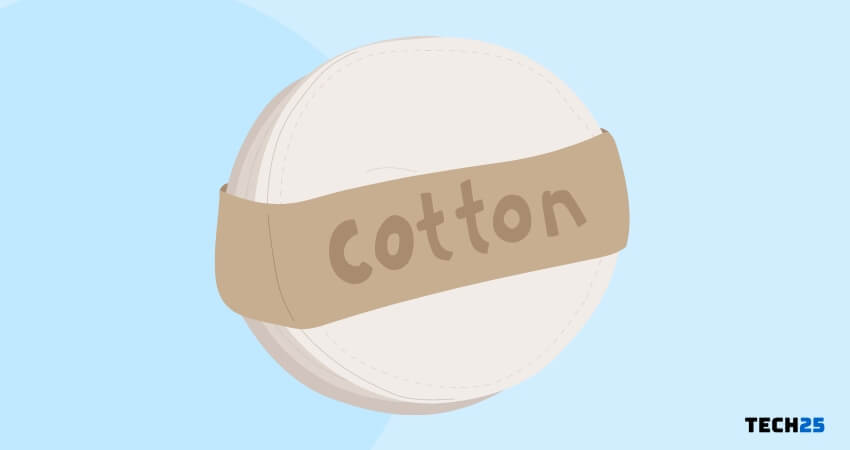
Cotton is a natural fiber that grows on plants from the genus ‘Gossypium’. You will be able to identify cotton because of its fluffy and soft structure. It grows on a protective shell that is called ‘boll’.
The fiber is mostly pure cellulose. The cotton boll bursts and disperse the seeds all around. There are many types of cotton but the 4 major commercially grown are:
- Gossypium hirsutum
- Gossypium barbadense
- Gossypium arboreum
- Gossypium herbaceum
2. Humans Have Been Using Cotton for a Long Time
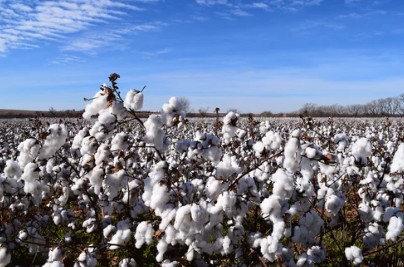
Cotton has been used as fabric since the prehistoric times. For example, archaeologists have found fragments of fabrics made with cotton that dates back to 5,000 BC in the ‘Indus Valley Civilization’.
Also, they have found traces of similar types of cotton in Peru that dates back to 6,000 BC. Additionally, it is known that warriors from the Inca civilization would use armors made with cotton.
3. Use of Cotton in the Textile Industry
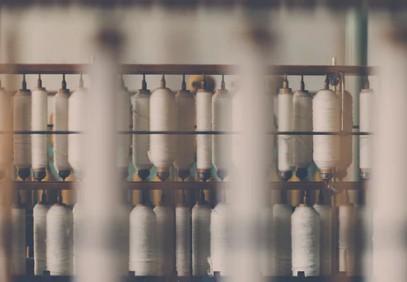
Cotton is one of the most essential fibers in the textile industry. Its application is limitless. So, here are some ways we use cotton in the textile industry:
- Cotton is necessary for most kinds of clothing from normal T-shirts to socks or jackets
- It is also used in making curtains, bed sheets, and pillow cover, etc.
- Cotton is also used in manufacturing carpets or rugs
- We also use cotton in making bags
- Cotton is also one of the most important elements for producing fine threads
- It is very useful in producing mosquito nets
- Many use cotton for making yarns
- It is also necessary for producing handkerchiefs, towels, shoelaces, and more
- Many companies use cotton for manufacturing robes, denim, cambric, terrycloth, underwear, seersucker, corduroy, and so on
4. The Origin of the Word ‘Cotton’
The English word ‘Cotton’ has come from the Arabic word ‘Qutun or Qutn’. During medieval times, this word meant ‘Linen’. However, ‘Qutun or Qutn’ was used to refer to cotton in Arabic in those times.
Later, sometime around 1,200 AD, this Arabic word entered the Romance language. And, in the 1,300 AD, the word entered into the English language and changed into ‘Cotton’.
5. There are Other Colors of Cotton
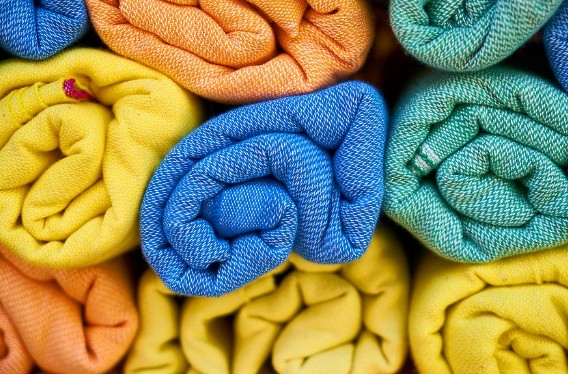
You might know that cotton is of a white or whitish color. However, there are many other colors of cotton out there as well. Typically, the wild cotton plants are found in Mexico, Africa, and Australia.
And, those cotton fibers can be in pink, brown, green, and even chocolate color. But in fear of contamination to the genetics of white cotton, the colorful cotton is not grown on a larger scale.
6. Cotton is Highly Absorbent
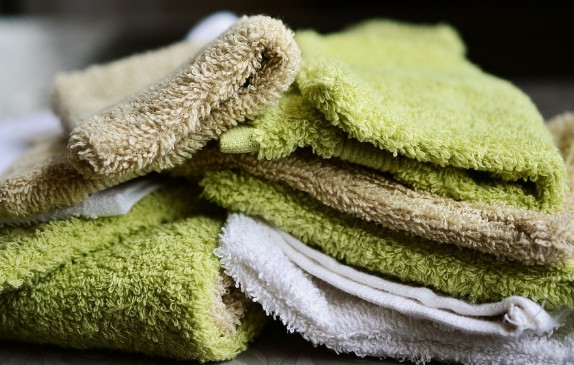
You might notice that the best quality towels are made with cotton. Why? Simply because cotton is one of the most absorbent fibers available.
Because cotton fibers have innumerable spaces in between them. As a result, they can absorb up to 27 times of water compared to their weight.
7. Most Banknotes are Made Using Cotton

Another unique use of cotton is to make banknotes. Most of us think that banknotes are made with paper.
However, this is not the case. Because if banknotes were made with paper, you wouldn’t be able to use it after a good splash of water.
For your information, most of the countries in the world use cotton paper for making banknotes. For instance, the United States uses a mixture of 75 percent cotton and 25 percent linen to make their banknotes.
8. Use of Cotton Outside of Textile Industry

We have already talked about the use of cotton in the textile industry, however, cotton is so versatile that it has been used from antiquity even outside of the textile industry. Here are some examples of that:
| Tents | Fishing nets |
| Bookbinding | Coffee filters |
| Automobile tops | Bandages |
| Friction tapes | Paper |
| Canvas | Tapes |
| Umbrella cloth | Wallcoverings |
| Typewriter ribbons | Banknotes |
| Smartphone cover | Cottonseed is a great food for cattle |
| We can make oil from cottonseed | Cottonseed is also used in many cosmetics, rubber industry, plastic industry, pharmaceuticals, etc. |
9. The Longest Cotton Fiber Grown
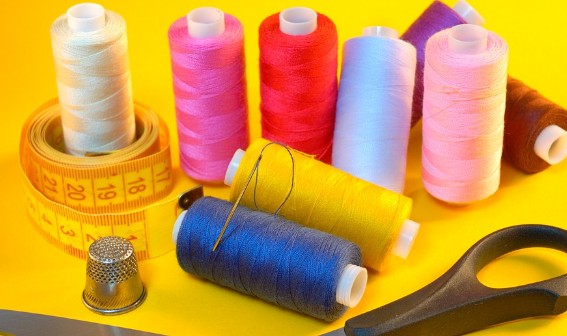
The best types of cotton are those that are longer yet strong at the same time. However, there are not many species that can produce such cotton fiber.
Some of the most notable longest cotton species are Pima, Egyptian, Sea Island, etc. On average, the fiber length of this type of cotton can go up to 1.7 inches.
Unfortunately, it is not easy to grow these types of cotton plants. Because they require a very high temperature to grow.
This type of cotton is also cultivated from a special type of seeds. As a result, even though the demand for these types of cotton is high, they are not produced enough.
10. Cotton Gin
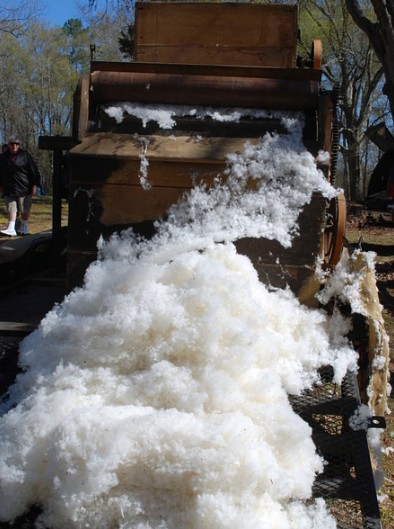
Wait, we are not talking about any alcoholic drinks here. ‘Cotton Gin’ actually refers to ‘Cotton Engine’, a machine that can separate the cotton fibers and the seeds very fast.
That means it can speed up the production of cotton compared to the manual cotton separation process.
Interestingly, the invention of the cotton Gin was a huge milestone in making cotton the most widely used natural fiber all around the globe.
There are many types of cotton gins available right now. Most of them are designed in ancient times.
Their design hasn’t changed a bit since then. However, Eli Whitney, an American inventor invented a modern model of the mechanical cotton gin in 1793.
11. A Bale of Cotton
In the US, cotton is measured in ‘bales’. So what is a bale of cotton? For the record, a bale of cotton measures about 17 cubic feet or 0.48 cubic meters.
The weight of a bale of cotton would be about 500 lbs. or 226.8 kg.
12. Cotton in the Ancient Times
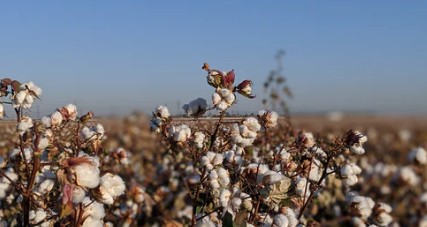
We don’t exactly know the real age of cotton. However, we know that humans have been using cotton for over 7,000 years.
Cotton was used for making cloths in 3,000 BC in the Indus Valley River Valley (Currently Pakistan).
People in Egypt would also wear clothes made of cotton. During 800 AD, cotton came to Europe because of the Arab merchants.
By 1,500 AD, cotton has been growing all over the world. Many civilizations would also use cotton as their armors in war.
13. Cotton is Hypoallergenic and a Good Conductor of Heat

Cotton has a lot of good qualities. One of them is that it is a hypoallergenic natural fabric. That means it does not trigger or cause any allergies. It is suitable for sensitive skin, also, it is a good conductor of heat.
With this property, cotton can keep us cool in warm weather, whereas it can also keep us warm in cold weather.
Due to these qualities, cotton has become the most popular fabric to be used in items of clothing all around the world.
14. All Parts of a Cotton Tree is Useful
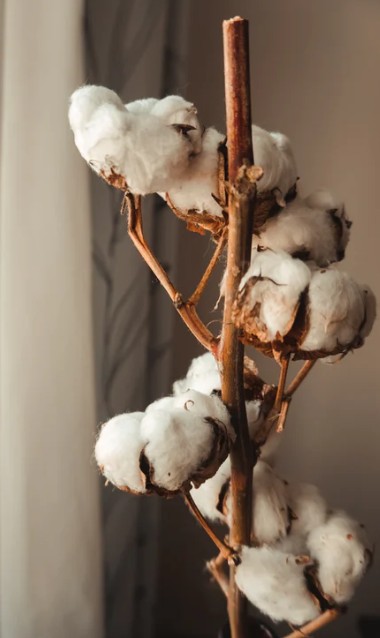
Cotton is a sustainable plant. Every part of a cotton tree including the boll, flower, linters, trunk, and leaves can be used. Typically, we know that fiber is used to make cotton cloth.
And, the trunk can be used for timber. And the linters are used for making explosives, plastic, and other products. Overall, there is no wastage from a cotton tree.
15. Thomas Alva Edison and Cotton

Thomas Alva Edison is known for many inventions including the light bulb. The first practical incandescent light bulb was a major invention by Edison and his teams.
Interestingly, he used cotton for manufacturing the filament that was necessary for those light bulbs.
16. Cotton Gets Stronger When Wet

Normally, most types of fibers get weak when wet. However, it is the exact opposite in the case of cotton.
Cotton actually gets stronger the wetter it is. This happens because of the hydrogen atoms in the water makes additional bonds with the atoms of the cellulose present in cotton.
Theoretically, when cotton is wet, it gets about 10 to 20 percent stronger compared to when it is dry.
17. Organic Cotton
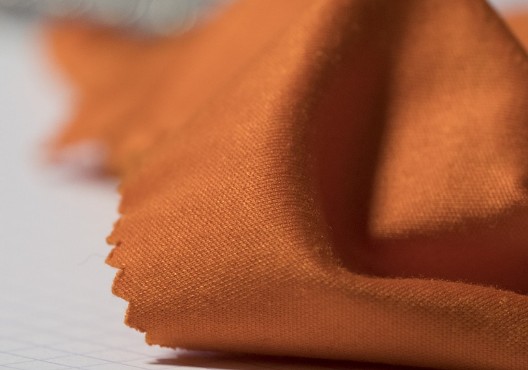
Typically, there are many bugs that harm cotton plants rigorously. To tackle that problem, farmers all around the world use chemicals like fertilizers, herbicides, insecticides, etc to handle this issue.
However, a few groups of farmers around the world are going organic, they are not using harmful chemicals on the plants and don’t use genetically modified cotton plants.
In short, you can say that this is entirely natural cotton production. Organic cotton is in great demand of producing diapers, baby clothes, and tissues.
18. Properties of Cotton
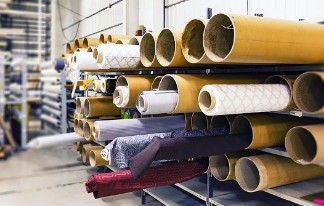
Cotton has some very unique properties. And we will be talking about some of them separately. However, here are some most notable characteristics of cotton:
- Cotton is very comfortable to wear
- It is slow to dry
- Cotton can wrinkle easily
- It is a natural fire
- It can absorb a large amount of water
- This fiber is breathable
- It can resist static electricity build-up
- It can withstand detergents, heat, and bleach
- Exposure to prolonged sunlight can damage the cotton fabric
19. Is Cotton Edible?
On its pure form, cotton contains a chemical named ‘gossypol’. And, this is a toxic chemical compound.
As a result, cotton is not edible in its purest form. However, scientists have genetically modified many types of cotton that don’t produce this toxin.
For that reason, cotton is used as a potential food crop nowadays.
20. Cotton in the USA
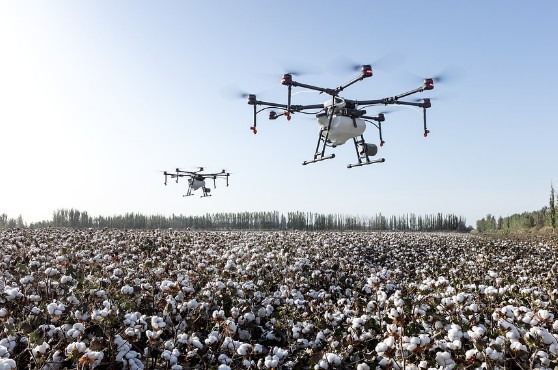
The USA started cultivating cotton very late compared to other countries around the world.
However, nowadays, they are at the top in producing cotton compared to many countries in the world.
For instance, USA has produced about 20 million bales of cotton in 2019-2020.
That takes them to the 3nd place in producing cotton in the world after China as India recently took the 1st place.
America is also the 3rd largest exporter of cotton in the world as they export about 36 percent of the total exported cotton in the world. Again, after China and India.
21. Uses of Recycled Cotton
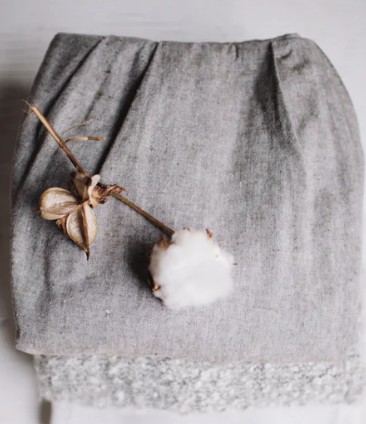
Cotton has great recycling value. Recycled cotton comes from textile waste, secondhand clothing, or leftover yarns or threads in the garment factory.
It is a great way to prevent unnecessary wastage. Recycled cotton is not that durable like brand new cotton.
So, often, recycled cotton is mixed with recycled plastic bottles to make textiles and items of clothing.
These recycled cotton are also used as wipers and polishing cloths in the industry. Additionally, recycled cotton can also be used to make high-quality paper.
It is also used as stuffing in cushions or as insulation items at home or automobiles. But even if you don’t recycle cotton, it is not a problem. Because cotton is biodegradable.
22. Countries that Produce Cotton the Highest
Cotton is very common all over the world. However, it needs a specific set of requirements in terms of the temperature and the location.
Here is a list of the countries that produced the highest amount of cotton in 2018-2019.
| India | 5.3 |
| China | 5.8 |
| USA | 3.8 |
| Brazil | 2.8 |
| Pakistan | 1.6 |
UPDATE – Recently India surpassed China as the world’s largest cotton producer
23. Cotton Harvesting
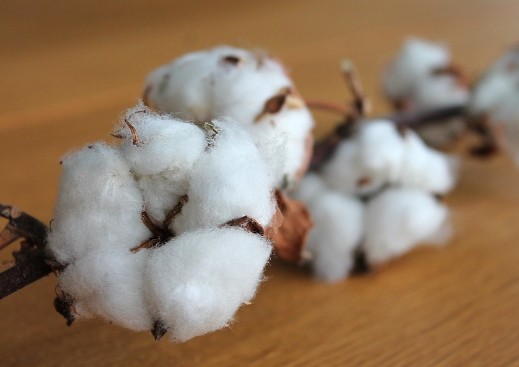
Many developed countries like the US, Australia, and some countries from Europe use automatic machines for harvesting cotton.
There are 2 types of cotton harvesting machines such as a cotton picker and a cotton stripper.
The cotton picker can remove the cotton from its boll without doing any damage to the plant.
The cotton stripper can pluck off the entire boll with the cotton from the plant. This type of machine is used in locations where the climate is too windy for growing picker varieties of cotton.
Unfortunately, many developing countries around the world use workers to pick cotton by hand.
24. Cotton Has Various Species and types

Chances are, you are thinking that there is only one type of cotton plant. However, that is not the case at all.
There are about 45 types of cotton species. But not all of them are commercially grown. Generally, only 4 types of cotton plants are commercially grown all around the world. Such as:
- Gossypium hirsutum: This type of cotton is responsible for 90 percent of the total cotton production worldwide. It is native to Mexico, America, the Caribbean, and southern Florida
- Gossypium arboreum: This is a unique type of cotton species. It is known as tree cotton. And it is native to India and Pakistan
- Gossypium barbadense: This particular cotton species are known for their extra-long length of the fiber. They are native to South America
- Gossypium herbaceum: Lastly, we have the Levant cotton. And it is native to the Arabian peninsula and southern Africa
25. Cotton is on the Moon

We all know that cotton is all around our planet Earth. However, did you know that it is also on the Moon? Interestingly, one of China’s spacecraft named ‘Chang’e 4’ has taken cotton seeds to the far side of the moon.
And, according to China, cottonseed from that batch has sprouted on 15th January 2019. Right now, the seeds are placed in a capsule inside the Chang’e 4 spacecraft in the Von Kármán Crater of the moon.
Wrap Up
We can see that cotton is nothing new. It has been available in our world for a long time. And, people from the ancient world also grew and used cotton for fulfilling their various needs.
To this day, the importance of cotton in human life has not decreased one bit. Rather, scientists are working genetically modified cotton species to make it more useful than before. And, we hope they will be successful in a few years.
So have you liked the information about cotton on our post above? You can also read our post on facts about electricity.
We bet you will like that as well. And, don’t hesitate to share your opinions and suggestions in the comments below!
